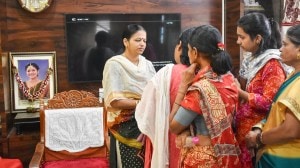- India
- International
The non-solutions
Technological fixes will not make government more collaborative, or parties more democratic.
Prime Minister Narendra Modi has made much of MyGov, a new portal for citizens to contribute ideas for governance. It is intended to “bridge the gulf between people and government” and make public participation an ongoing affair, the PMO claims. Meanwhile, the Congress, which has been more wary about technology and social media, is also working on an intra-party online platform, ostensibly to bring “greater transparency and accountability”. Both these efforts are unobjectionable, but they make a fetish out of technology, and assume that the mere fact of existing online somehow furthers transparency and participation.
The internet has some obvious affordances — it makes it easier to coordinate mass action, to micro-target messages, to receive feedback and spread information. Social media is highly useful for political parties, for messaging as well as mobilising. But apart from organisational ease, there is no inherent social virtue or progressive impulse in the use of a website or social media platform. Positive change depends on social and institutional environments. An apparently centralised Modi government, where decision-making seems to be tightly streamlined, is unlikely to get its direction from the lightbulb ideas on MyGov. Running an open government requires much more — it requires proactively making the government’s information available. While the UPA’s data.gov.in aimed to open up ministry information, it was clunky and inaccessible to all but the most dedicated users. While the idea of crowdsourcing bright ideas for governance is positive, its effects will have to be seen to be believed.
The Congress website — the latest attempt, after flops like Khidki and Pehchaan — is less ambitious, focused only on the youth wing of the party. While it may be a good way for party workers to keep each other informed, the spin about “transparency and accountability” falls flat in a context where the power structures that govern participation and choice between inputs remain unchanged. There is nothing revolutionary about this plan — it is merely an online bulletin board. The rituals of open information and feedback can often be a strategic cover for self-willed leadership. The Congress cannot hope to compensate for the lack of inner-party democracy with the sound of inner-party chatter. In other words, by itself, a website is just a website, not a harbinger of change.
EXPRESS OPINION
More Explained
Apr 26: Latest News
- 01
- 02
- 03
- 04
- 05


































